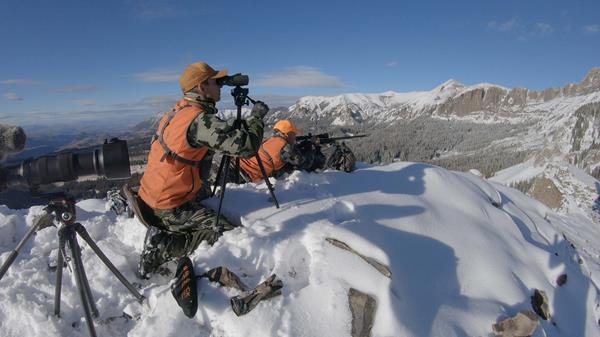
In 2002, I shot my very first deer with a buddy’s 7mm STW at 396 yards. Back then, a 400-yard shot was a “long shot” and there were no yardage turrets for your scope. You had to know your gun and know how high to hold over an animal to make an effective shot. Since then, technology has come a long way and there is almost no limit on how far you can shoot.
When I hear the words “long-range shooting,” I immediately think of a custom rifle with a turreted scope capable of shooting 1,000 yards or more. With today’s crazy accurate rifles, turreted scopes, rangefinders, ballistic calculators, and wind meters, it almost seems as if no shot is too far. However, there are a lot of factors that come into play that you must be aware of if you are going to execute an accurate shot at long range. I love to shoot long distance, but I often find myself questioning whether it is responsible or ethical.
I know for a lot of hunters and outfitters it has changed the way they hunt and scout. In the good old days, if you found yourself 800 yards across a canyon from an animal you wanted to harvest you had to put together a plan on how to get closer and kill it. In other words, you had to hunt. A lot of hunters today find themselves in the same situation, and with a proper long-range setup, they make that shot happen. This year in Colorado on a second season deer tag, I found myself in one of these scenarios. I had a buck I wanted to harvest bedded across a canyon at 650 yards. I felt pretty comfortable with the shot, but the wind was all over the place. I could have easily made a stalk on him that would have taken an hour or two to get in position to make a 250-300 yard shot, but I didn’t know if he would still be there by the time I made it across the other side. I decided to take a shot from my current location and ended up missing the buck. Looking back on it, I realized I was being lazy and thinking the shot I had was the only one I was going to get. If I would have put in the effort to get closer, it probably would have resulted in a notched tag.
Even if you can make a perfect shot every time at long distance, I feel like shooting at an animal at ranges over 400 yards cheats us out of the hunt. Think about it. If you can sit across a canyon from an animal that cannot smell you, see you, or even hear you if you were to speak in a normal voice, I suggest you are now shooting and not hunting. Hunting implies working the wind, staying out of sight, and being stealthy. Hunting tests our ability to remain undetected by the animal we are pursuing to get within effective range to harvest it. The closer we get, the more nerve-wracking and exciting it can become. As a bowhunter as well, I know firsthand how intense and frustrating these moments can be. Making a kill shot from another area code takes a lot of the challenge and excitement out of a hunt.
These type of debates on long-range shooting will probably never settle the difference in opinions among hunters and sportsmen. However, I hope that it can help us define what real hunting is and where we should draw the line. We all need to be responsible for the shots we take and make sure we are doing our due diligence in every situation to make the shot count. Hunting is an amazing opportunity we have been given, and we need to think about the impacts we have on it today and for the generations to come.